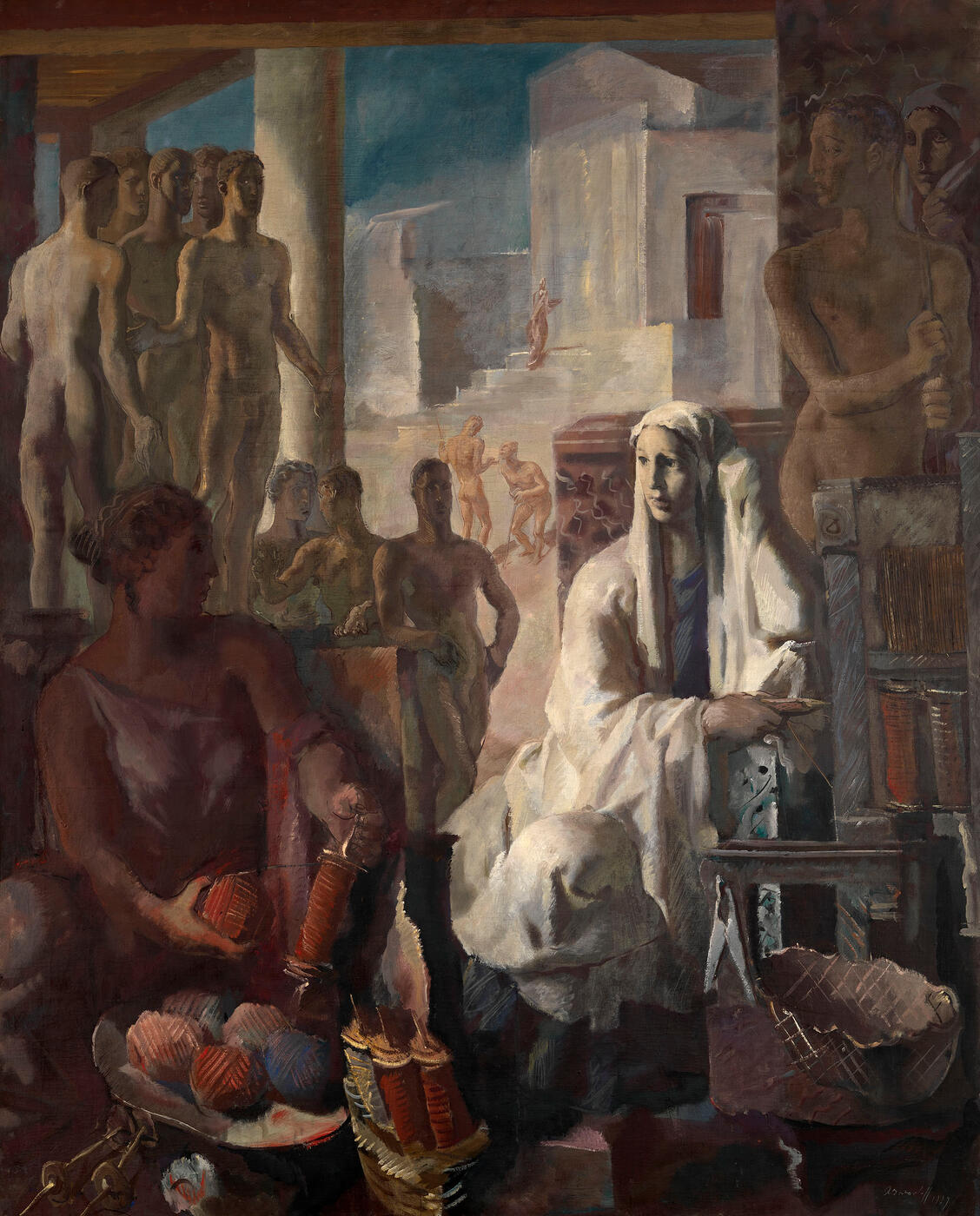27 Nov 2013 Russian Art Auctions
27 November 2013

40. YAKOVLEV, ALEXANDER (1887-1938)
Penelope, signed and dated 1929.
Tempera on canvas, 210.5 by 170.5 cm.
250,000–400,000 GBP
Provenance: Collection of the renowned publisher and husband of the artist’s niece, Alexander Liberman, Paris.
Acquired from the above by the antique dealer Roger Prigent, USA, c. 1980.
Acquired from the above by a previous owner.
Anonymous sale; Russian Art, Part II, Sotheby’s New York, 17 April 2007, lot 337.
Private collection, UK.
Exhibited: Alexandre Iacovleff, Galerie de la Renaissance, Paris, 1929.
Alexandre Iacovleff, Galeries d’Art Kodak, Brussels, 30 November–9 December 1929, No. 1.
Exposition Alexandre Iacovleff. Peintures, aquarelles, dessins, Galerie Vendôme, Paris, 23 November–18 December 1965, No. 46.
Literature: For illustrations of the present lot in the French press of 1929, see the Yakovlev family album, RGALI, Moscow, fund 2477, listing 1, file 16.
Possibly, exhibition catalogue, Alexandre Iacovleff, Paris, Galerie de la Renaissance, 1929.
Exhibition catalogue, Alexandre Iacovleff, Brussels, Galeries d’Art Kodak, 1929, No. 1, listed.
Exhibition catalogue, Exposition Alexandre Iacovleff. Peintures, aquarelles, dessins, Paris, Galerie Vendôme, 1965, No. 46, pp. 12, 18, 20, illustrated.
Alexandre Iacovleff. Itinérances, Paris, Somogy éditions d’Art, 2004, pp. 108, 113, illustrated, incorrectly dated 1927.
Alexander Yakovlev’s Penelope may with no exaggeration be called one of the artist’s most significant mythological compositions of the 1920s. In this painting Yakovlev synthesises images from the old masters with the achievements of the most recent developments in art, above all cubism and metaphysical painting. He takes a classical theme from ancient mythology and creates a new type of picture, using form expressively and colour to great effect.
His heroine is Penelope, spouse of the legendary Odysseus and the ideal of womanly nobility and fidelity. Over the twenty years of Odysseus’s wanderings, when he was believed dead, she tried with all her might to put off responding to proposals for her hand from representatives of powerful local families. At first, Penelope promised to choose a new husband once she had finished weaving a shroud for her father-in-law, Laertes, as was the custom, so that he would have a proper funeral when he died. By night, however, Penelope would undo what she had managed to weave during the day. After a servant girl revealed this deception, her suitors forced Penelope to finish the work. Then, advised by Athena who had descended from Mount Olympus in the guise of a wayfarer, Penelope announced that she would marry the suitor who was victorious in an archery contest using Odysseus’s bow, a herculean weapon she hoped no-one would be able even to string. On the deciding day of the contest Odysseus appeared and put paid to his wife’s troublesome suitors.
Seeking to convey the lyricism of Homer’s images as well as their epic quality, Yakovlev builds his monumental canvas on contrasts between female figures (Penelope and Athena) and male ones (the assembled suitors), but also dark colours in the foreground against a brightly lit background. There is a particular resonance about the close attention to detail in the articles used for weaving, the metaphor in the images, the attitude of the women to each other and, chiefly, the view outside the room that gives the composition an effect of breaking into endless space beyond the picture: these qualities recall Diego Velazquez’s Spinners, which Yakovlev had admired in the Prado when travelling round Spain. Treatment of the imagined Greek architecture visible in the distance is cursory, however, and the realistic and accurate depiction of objects and forms contrasts with the statuesque atmosphere of their surroundings. This creates an effect of alienation and unreality which is more reminiscent of trends in art in the 1920s than of the artistic devices of 17th century masters.
After Penelope,Yakovlev went on to paint several more works on mythological themes in the same manner. He included the best of these – including Danae and Lot’s Daughters, and the present lot Penelope – in his personal exhibitions of 1929 held at the Renaissance gallery in Paris and the Kodak in Brussels.
Notes on symbols:
* Indicates 5% Import Duty Charge applies.
Ω Indicates 20% Import Duty Charge applies.
§ Indicates Artist's Resale Right applies.
† Indicates Standard VAT scheme applies, and the rate of 20% VAT will be charged on both hammer price and premium.